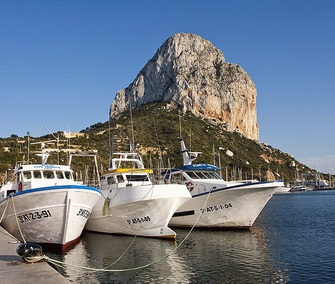Calpe’s history is linked to the sea and fishing, the main source of income for many of its households. As you wander Calpe’s streets, you’ll constantly see the importance of the sea to its people as you pass buildings like the Fisherman’s Association. You can also see its seafaring soul as you go for a stroll around the fishing port and visit the fish market.

The work day at sea starts very early. At five o’clock a trail of small and mid-sized boats depart from the port with small crews that consist of a captain, a mechanic, a cook, and other sailors who do various tasks like being on watch, sorting fish, raising the nets onto the deck, etc.
Once they reach the fishing ground, the place the captain has chosen to cast the nets, they begin to work by using the trawling technique. After a couple of hours they lift the nets aboard and sort the fish they’ve caught into boxes. Once they’ve hosed down the deck, they cast the net into the water again, repeating the same operation up to four times a day. After the final casting of the nets, the boats return to the port to auction off their catch.
About 1,700 metric tons of fish are caught in Calpe each year using the trawling and trammel net techniques. The most commonly caught species are: whiting, red mullet, squid, mackerel, octopus, grouper, gilt-head bream, and various shellfish like lobster, prawns, langoustine, mantis shrimp, or crab.
What about you, do you have the soul of a sailor?


